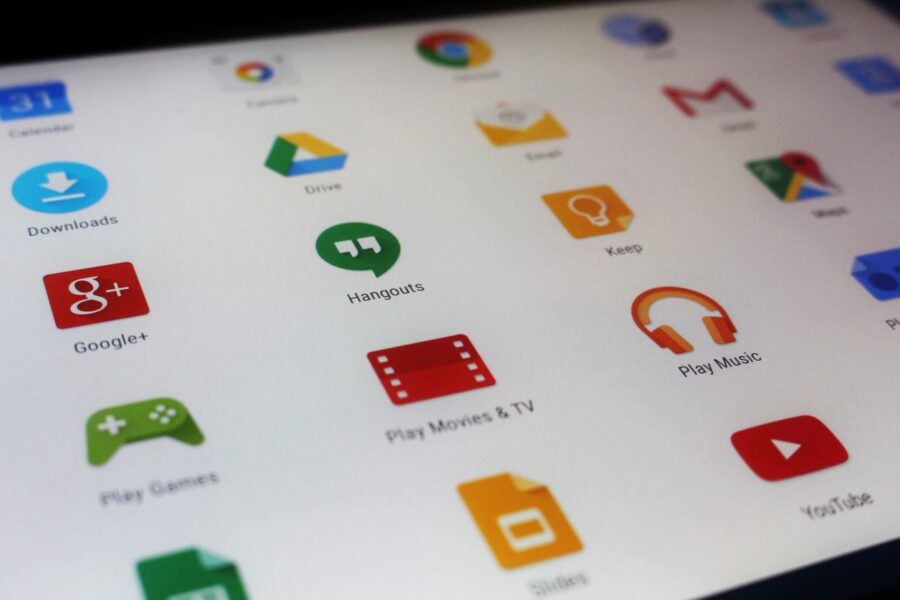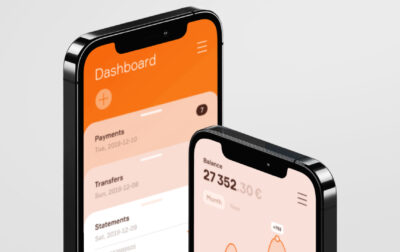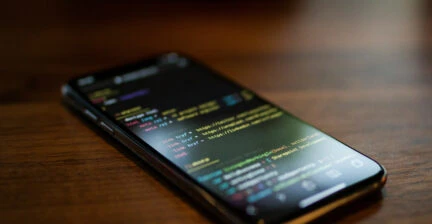Understanding Android architecture components
Android reigns supreme as the world’s most popular operating system, with over 3 billion users across 190 countries. It has come a long way since its initial release in 2008. Today, tools like Jetpack help developers build better apps faster. However, you should know all tips and tricks to do this successfully. For this reason, in this article, Touchlane’s mobile gurus break down the latest Android architecture and also share their Android architecture components list that includes key tools such as Jetpack Compose, Coroutines, and Room.
Evolution of Android architecture components
In 2018, Google launched Android Jetpack, propelling the journey of Android architecture components. This toolkit was designed to simplify app development by providing solutions to common challenges like managing app screens, handling background tasks, and storing data.
Over the years, Jetpack has grown significantly – these days, Android Jetpack libraries are used by about 99 percent of the apps available on the Google Play Store. Jetpack architecture components include a robust set of tools that work together to help developers create high-quality Android apps.
Core Android architecture components
Android application architecture components are tools provided by Google to help developers build better apps. These tools break down app tasks into smaller, manageable parts, which makes apps easier to understand, test, and update. They also help manage the app’s display and handle data efficiently.
Below, we share the key components of Android architecture.
Jetpack Compose and Compose Multiplatform
As we mentioned above, Jetpack Compose has changed how developers build Android apps. It makes creating user interfaces much easier and faster. The latest version, Compose 2.0, is even better with improved speed, new features, and better integration with Material You design.
In addition, mobile developers now use Compose Multiplatform, a framework based on Jetpack Compose, to build apps for different platforms like Android, iPhone, and the web, saving time and effort.
Coroutines/Flow
Kotlin coroutines make it easy to handle tasks that take time to finish without freezing your app. They let you run things in the background while keeping your app smooth. When using coroutines, more than half of professional engineers say they are more productive.
Flow is a special tool that helps you manage data that changes over time, like live updates. Combined, they make your app feel fast and responsive.
ViewModel
ViewModel is like a container that summarizes the business logic of the app. It keeps track of information while you switch between screens or change your phone’s orientation. The latest version makes it even easier to handle complex screen changes and works well with the new way to build app screens (Jetpack Compose).
Room
Room makes it easy to save and load data on your phone without dealing with the complicated parts. It is like a helpful assistant that handles all the technical stuff. Recently, it has become even faster and can handle more complex data, making it the best choice for storing information on your app.
Navigation
Navigation components help your app feel smooth and easy to use. They make sure people can move around your app without getting lost. From simple button clicks to more intricate patterns like app bars and the navigation drawer, this component of the Android navigation architecture manages a wide range of use cases.
WorkManager
WorkManager helps you schedule tasks that need to be done later, even if your app is closed. It makes sure these tasks finish, even if your phone runs out of battery or restarts. WorkManager is the primarily suggested API for background processing because most background processing is best achieved through persistent work.
Kotlin Multiplatform
Kotlin Multiplatform lets you write code once and use it on different devices like phones, tablets, and computers. This saves time and makes sure your apps work the same way everywhere. KMP is used within Google and recommended for sharing business logic between the iOS and Android platforms.

Integrating architecture components into your app
It takes a calculated strategy to build scalable and reliable Android applications. Here are the Android architecture components examples that you and your team need to keep in mind to design exceptional user experiences.
Modularization
For sustainable app development, modularization is not just a trend – it is a requirement. Developers can create a more manageable, tested, and flexible codebase by breaking down an application into distinct, contiguous modules. This architectural pattern promotes a clear separation of concerns, enables concurrent development, and reduces the impact of modifications. An application that is well-modularized functions like a fine-tuned machine, with each part fulfilling a specific role.
Cross-platform convergence
By offering a single framework for both iOS and Android apps, Kotlin Multiplatform has completely changed the development environment. Developers can speed up development cycles, guarantee consistency in feature implementation, and decrease code repetition by sharing business logic across platforms. However, effective dependency management is crucial, which leads us to frameworks like Koin and Kodein.
Dependency injection
A design technique called dependency injection (DI) encourages testability and loose coupling. Instead of building dependencies within components, developers build more adaptable and manageable systems by injecting them. This procedure is streamlined by DI frameworks like Koin and Kodein.
Network orchestration
For modern applications, network communication must be reliable and efficient. Libraries such as Ktor provide an extensive toolbox to manage various network operations. This ranges from basic HTTP queries to sophisticated protocols like WebSockets. Through the implementation of a methodical approach to network interactions, developers can boost security, as well as optimize user experience and app performance.
Testing
Delivering software that meets high standards requires a strong testing approach. A thorough testing program is built upon the foundation of unit, integration, and user interface testing. Developers may guarantee the quality of their code and avoid regressions by automating these tests and incorporating them into a continuous integration and delivery pipeline.
UI Development
Jetpack Compose’s declarative and modular design has completely revamped UI creation. Developers can write less code while still producing aesthetically pleasing and functional user interfaces by implementing this approach. At the same time, Compose Multiplatform spreads its advantages to additional platforms and fosters code sharing and consistency across the development ecosystem.
To sum it up, you need to focus on modularization, cross-platform convergence, and effective dependency management to create exceptional apps. Employ network orchestration, conduct thorough testing, and use tools like Jetpack Compose and Compose Multiplatform for UI development – that is how you can build apps faster and with greater efficiency.
Need an Android app?
Future trends and predictions
Our team anticipates that Kotlin Multiplatform will improve significantly in the future and increase its capacity for intricate cross-platform applications. Expect enhanced library ecosystems, better tools, and a growing community guiding its development. This convergence will accelerate development cycles across several platforms.
With an emphasis on quick and flexible release pipelines and integration, the CI/CD environment is ready for an evolution. A lot of systems, such as Jenkins, CircleCI, and GitHub Actions, will soon release advanced functionality designed specifically for the complexities of mobile development.
On-device AI is going to play a major role in creating future-ready app experiences. Developers will incorporate lightweight artificial intelligence models to improve functionality, all this while prioritizing user privacy and performance. They will use the computational power of mobile devices for such integrations.
Conclusion
Developing great apps today requires learning how to use tools like architecture components. It is an exciting moment to build an Android application because of the tremendous promise of the future of Android development. This includes improvements in cross-platform development, quick build and release cycles, and the integration of on-device artificial intelligence.
At Touchlane, we follow Android architecture trends closely to always stay ahead of the curve. If you are looking for a tech partner who can build you high-performing, user-centric apps that stand out in the crowded marketplace, contact our team.
RELATED SERVICES
CUSTOM SOFTWARE DEVELOPMENT
If you have an idea for a product along with put-together business requirements, and you want your time-to-market to be as short as possible without cutting any corners on quality, Touchlane can become your all-in-one technology partner, putting together a cross-functional team and carrying a project all the way to its successful launch into the digital reality.
If you have an idea for a product along with put-together business requirements, and you want your time-to-market to be as short as possible without cutting any corners on quality, Touchlane can become your all-in-one technology partner, putting together a cross-functional team and carrying a project all the way to its successful launch into the digital reality.
We Cover
- Design
- Development
- Testing
- Maintenance











